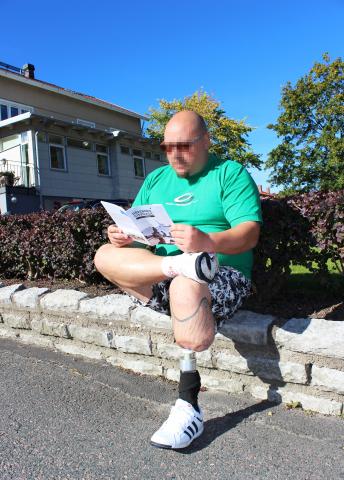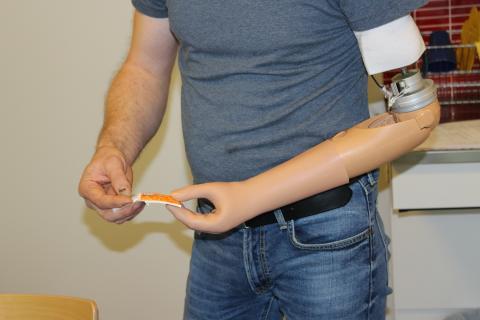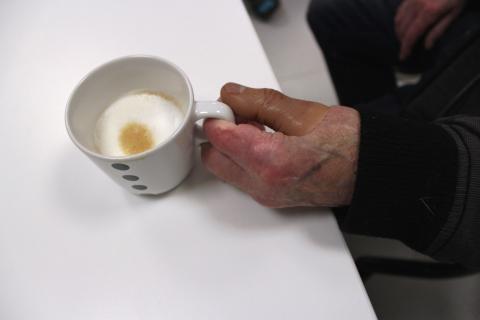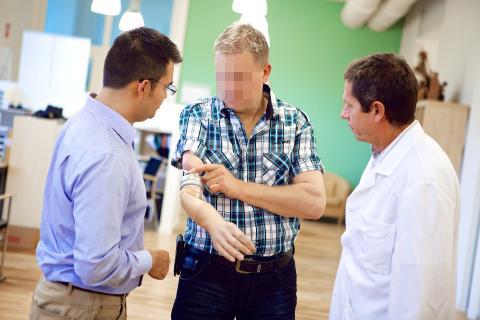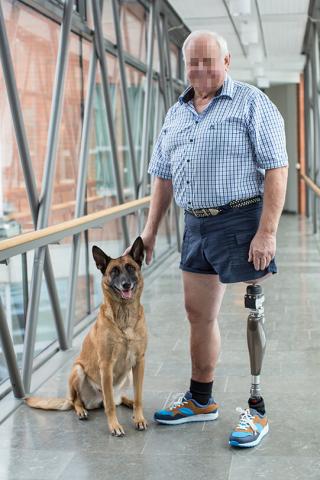Artificial prosthesis and Osseoperception, the discovery of the Biorobotics Institute: sensory stimuli can travel through the body and be perceived by the ear
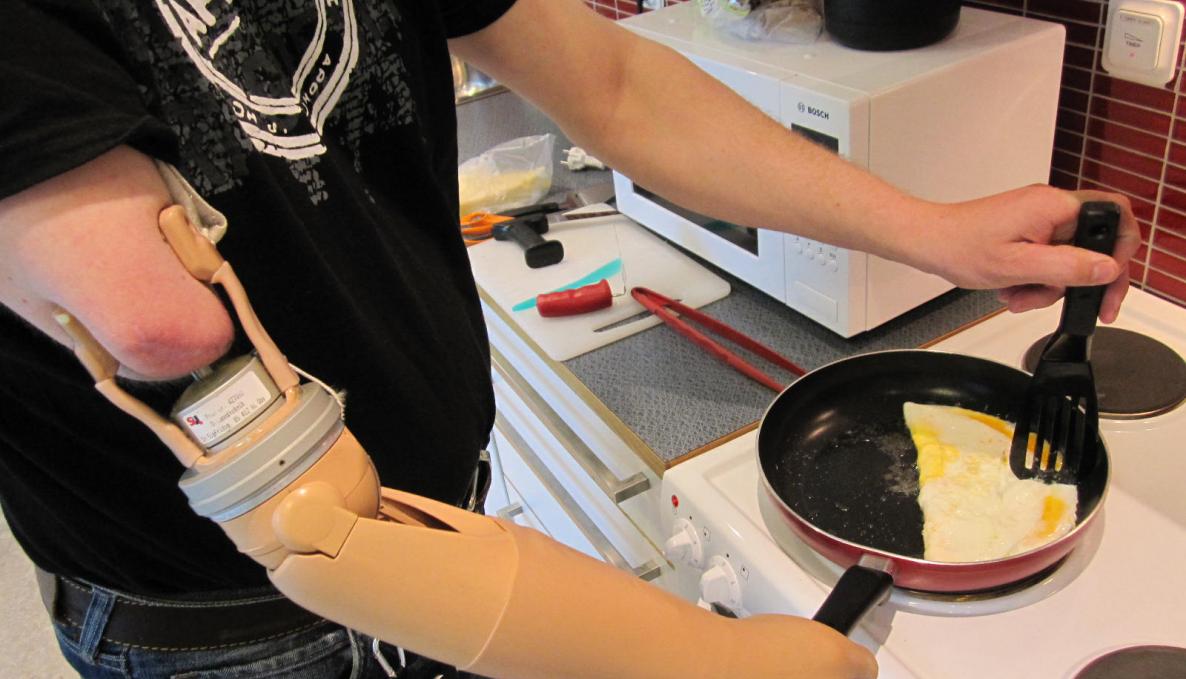
What can be done to help upper and lower limb amputees in getting back tactile sensations and perceive natural sensations while grasping an object or walking on an irregular ground?
A research study carried out by Francesco Clemente, a post-doc fellow at the BioRobotics Institute of Sant’Anna School of Advanced Studies, in collaboration with the partners of the DeTOP (Dexterous Transradial Osseointegrated Prosthesis with neural control and sensory feedback) coordinated by Christian Cipriani, coordinator of the Artificial Hands Area of the Institute, offers a new answer.
It was demonstrated for the first time that patients using an osseointegrated prosthesis, i.e. attached directly to the skeletal system (similarly to what is done with dental implants), are able to perceive external stimuli better by exploiting the auditory sense.
In the paper “Touch and Hearing Mediate Osseoperception”, published on Scientific Reports, the researchers present the discovery which opens up new scenarios for the development of new artificial limbs: albeit the transmission of sound through bones is a well known phenomenon, it was not clear if such a phenomenon played a role in osseoperception (this is how the perception arising from the mechanical stimulation of an osseointegrated prosthesis is referred to). Until now, the consensus was that the sense of touch and the improved mechanical stability of the prosthesis were the cause of the phenomenon; on the contrary, through four different psychophysical tests, the researchers demonstrated that even subtle sensory stimuli can travel through the body and be perceived by the ear, increasing the sensory awareness of the individual. This is true also in the case of prostheses anchored on distal parts of the body (e.g. lower limb prostheses).
These results show new insights on the osseointegration technique, which thus allows to attach robotic prostheses directly to the skeleton through a titanium implant, improving both the comfort and the ability of patients to perceive the external world.
The researchers have carried out the tests on twelve patients with different amputation levels (both upper and lower limb amputations). All tests provided evidence that the patients were able to perceive the mechanical vibration applied on the titanium implant both through hearing and touch. In particular, synchronously with the vibration of the arm/leg, patients reported to hear a sound. During the experiments, the researchers found that the subjects using osseointegrated prostheses can perceive very small stimuli and react faster to them, thanks to the additional perception through hearing.
In practice, the stimuli received by the patients are perceived as stronger and carry more information because they are perceived through touch and through hearing. This is an important step forward and advances the knowledge of the osseoperception phenomenon and, more generally, of the tactile and auditory perception of humans. This discovery can be exploited as a starting point for the implementation of novel prostheses that provide an enriched sensory feedback to the user.


